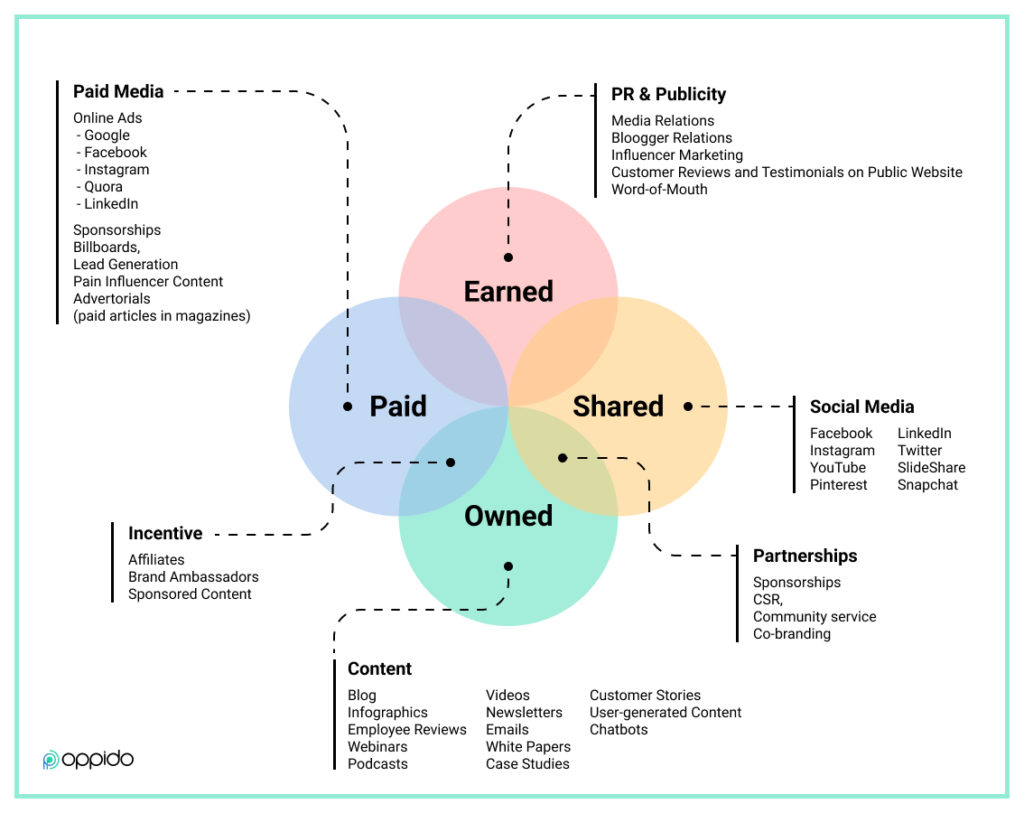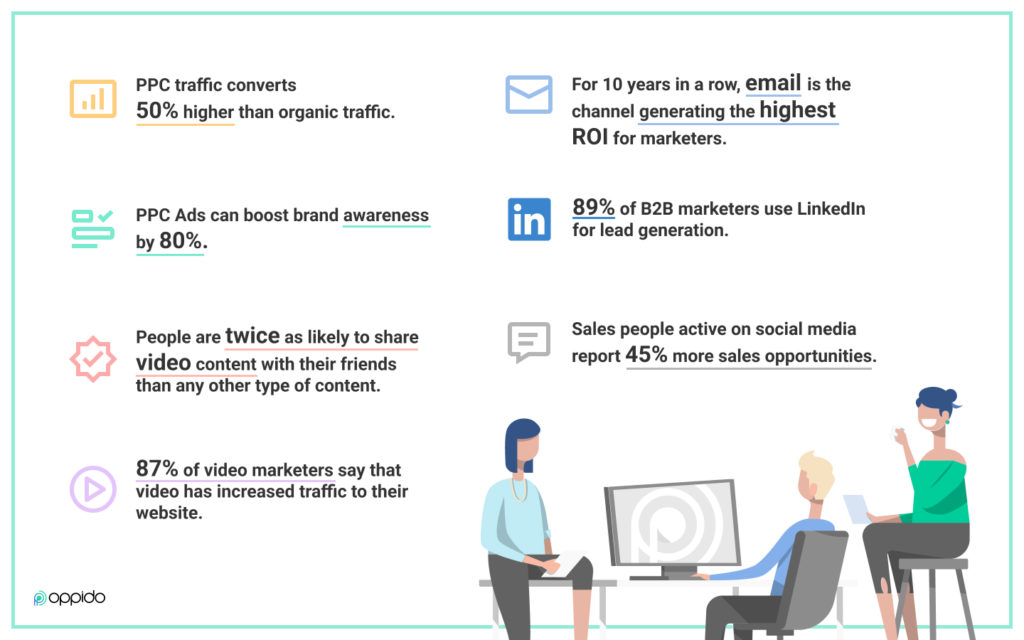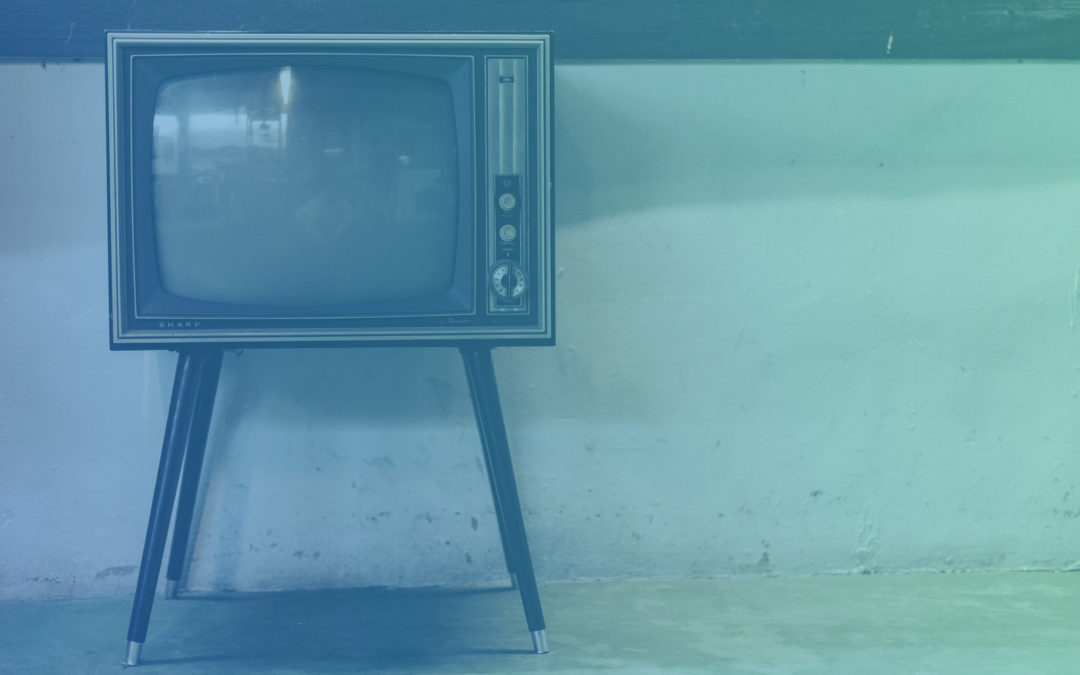PESO is an acronym for Paid, Earned, Shared, Owned. It is a model grouping all the communication channels into one of the groups as mentioned above. Its use case becomes evident when deciding on the media mix you want to use as a company. Each of these groups has specific advantages and disadvantages. At the same time, in the modern age, communication channels are rarely siloed. Therefore, in this article, we will look at all the factors you should consider when choosing your media mix and communication mix.
Before you dive into the PESO magic world, check out our latest articles about communication strategy and how marketing funnels can help nail your business growth!
Paid Channels
What Are Paid Channels?
Any channels where you have majority control over the content/messaging, and you pay for the message to be broadcasted on the given channel. Examples include:
- Online Ads: i.e., on Google, LinkedIn, Facebook, Quora
- Mass Media Ads: i.e., on TV, in Radio, or Newspapers/Magazines
- Advertorials: i.e., paid articles in magazines
- Sponsorships
- Billboards
- Paid influencer content
Advantages of Paid Channels
✅ It can be used to reach potential customers not actively looking for your products.
✅ Paid channels generally allow for very detailed targeting of people you’d like to attract.
✅ Using paid channels, you have complete control over the broadcasted message.
✅ Paid channels are generally the fastest communication channel you can use to reach large amounts of potential customers.
Disadvantages of Paid Channels
❌ Paid channels are by far the most expensive communication channel.
❌ Paid channels only work when you pay for them. The moment you stop investing in paid media, all of their benefits stop.
❌ People can ignore your paid ads by believing it’s not relevant for them or by using AdBlockers.
❌ Consumers are often mistrustful of paid advertising resulting in paid media suffering from a lack of credibility.
❌ Banner blindness.
Best Practices for using Paid Channels
- Be creative in your messaging and visuals – try to stand out from the crowd.
- Be brief and to the point; users mentally “skip” ads, so be concise in messaging.
- Utilise long-tail strategies, long-tail keywords, or more obscure but cheaper channels.
- Analyse, analyse, analyse and be very strict in the media in which you continue investing.
- Prototype and experiment. Start small and only increase where you see ROI.
Earned Channels
What are earned channels?
Earned channels represent all published mentions about your brand or product, where coverage isn’t under your control, and you haven’t paid for it (in direct or indirect means). Examples include:
- Mass media coverage (TV, Print, Radio, Online News)
- Customer reviews and testimonials on public websites
- Word-of-mouth
- Blog posts and mentions on industry websites
Advantages of Earned Channels
✅ Generally considered the most trustworthy by potential customers
✅ It helps you quickly increase awareness about your business amongst the general public.
✅ It greatly helps with the SEO performance of your website, especially with do-follow links.
Note: SEO itself is not technically considered an earned media channel but a process.
Disadvantages of Earned Channels
❌ Earned channels are a double-sided sword. Watch out for bad publicity.
❌ Performance/ROI of earned media is notoriously hard to track and measure.
❌ Creating a long-term relationship with the media is a complicated and lengthy process.
❌ Decent PR agencies will never guarantee an outcome, making ROI very risky.
Best Practices for Using Paid Channels
- The best way to achieve news coverage is to do something newsworthy!
- Become an expert on the topic, and the news themselves will start reaching out to you.
- Play the long game and don’t try to sell your product every chance you get.
- Invest into relationships with journalists – in legal and ethical manners, of course.

Shared Channels
What Are Shared Channels?
Shared channels are all mentions about your product or brand that users/customers share amongst themselves in the form of posts, mentions, or discussions.
Examples include:
- YouTube
Advantages of Shared Channels
✅ Allows you to reach large groups of people without the editorial middleman.
✅ By definition, shared channels are free-of-charge.
✅ You can easily technically track your performance over time.
✅ You can support positive shared content with performance marketing.
✅ You can easily support Shared channels with your own organic, creative content.
✅ The load time of shared media can be rapid — #trending
Disadvantages of Shared Channels
❌ Shared channels are a double-sided sword. Watch out for bad publicity.
❌ It’s tough to please everyone, and negative publicity shares faster than positive.
❌ It’s challenging to plan Shared media campaigns; they often react to trends.
Best Practices for Using Shared Channels
- Set up brand tracking as soon as possible.
- Promote positive feedback, but don’t be creepy — responding to every comment.
- Respond calmly to any negative feedback from clients. Don’t hide from issues.
- Motivate your employees and clients to share their content.
Owned Channels
What Are Owned Channels?
Owned channels are any means of communication where you have complete editorial control over the content. You decide on the audience targeted and don’t need to pay for distribution, excluding printing and delivery.
Examples include:
- Website
- Email Marketing, Newsletters
- Your Social Media Profiles
- Webinars, Podcasts, eBooks, and the like
- Chatbots, Messaging Apps
Advantages of Owned Channels
✅ You have complete editorial and creative control over the content.
✅ They are free-of-charge, therefore more cost-effective than paid channels.
✅ The fastest way to reach your relevant audience.
✅ You can very quickly tweak the content to match the requirements you have.
Disadvantages of Owned Channels
❌ It takes by far the longest to achieve a large enough target group.
❌ A lot harder nowadays to attract and maintain subscribers due to GDPR.
❌ Requires a lot of editorial and creative staffing to maintain high-quality content.
Best Practices for using Owned Channels
- Don’t try to do everything. Start small and build up as your capabilities increase.
- Don’t be afraid to experiment with new formats, content, delivery methods.
- Create owned media that act as industry media.
- Always keep your website SEO optimised!
- Consider investment into Owned channels a long-term investment.

So, How Do You Decide What Channel Is Best?
As with everything in marketing, there’s no “one size fits all” answer. Furthermore, in the case of PESO, the answer is most likely going to change over time. However, the PESO framework enables you to optimise your communication strategy with leading media and simultaneously integrate with other media to enhance the effectiveness and brand value.
- Analyse your current resources — financial, human, content.
- Define what your goals are and how quickly you need to achieve them.
- Choose the most efficient channels that can help you reach your goals.
- Be very specific in your use of the media, constantly push for efficiency.
- Follow the changing marketing landscape and adjust your media strategy to the latest trends.
- Don’t forget to invest in the future!
To summarise, there are dozens of frameworks that senior skilled marketers need to keep in mind in their daily jobs. One of them is the PESO framework. It helps you quickly visualise the pros and cons of individual channels and choose the best form of action. But as with everything else, please don’t follow these frameworks to the dot. Feel free to tweak the PESO framework to your own needs, re-assign channels to different groups — because they may work differently for you. At the end of the day, it’s all about answering the one simple question:
“What’s the easiest way I can achieve my goals?”
Further reading:
